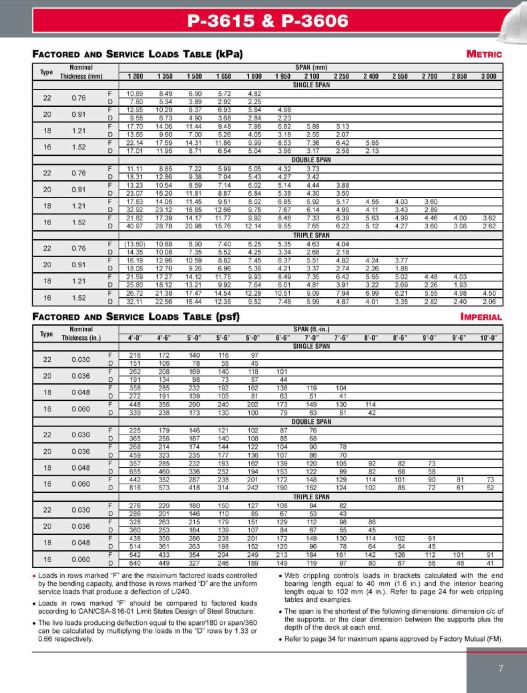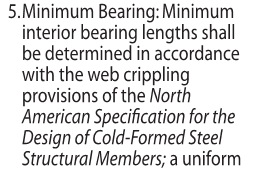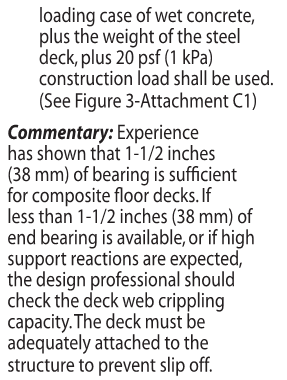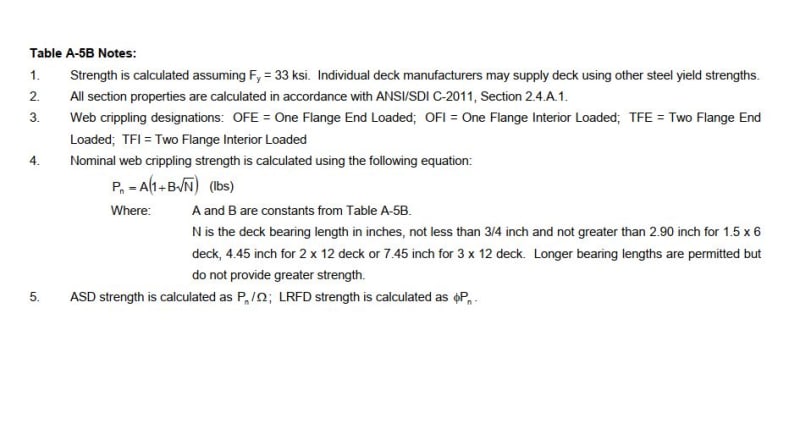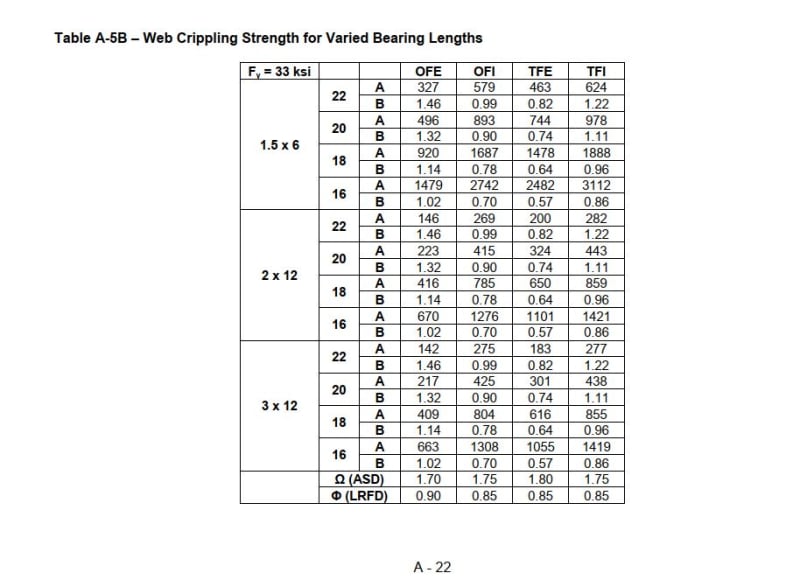dik said:
any idea of how the coefficients A and B are determined?
I haven't a clue! Here is what I found:
The design expressions used in most cold formed steel specifications are empirical in nature, as there is a large number of variables involved in the resistance to web crushing. There have been many attempts also to apply theoretical analysis to these problems, and the buckling behaviour of webs in the presence of localised loads. Of note among these is Khan and Walker [7]. In recent years also the plastic mechanism approach has been used by different authors, e.g. Bakker and Stark [8], Setiyoni [9]to provide alternative formulations to the solution of web crushing problems. However, in cold-formed steel design the specifications are at present empirical.
The empirical nature of the design rules, as mentioned, has been occasioned because of the large number of variables incurred in evaluation of web crushing capacity. The empirical rules are very useful and permit rapid, and in general safe, analysis of web crushing capacity within their range of application. The AISI Cold-Formed Steel Specification [10]has equations dealing with a wide variety of conditions. The corresponding British Specification [11]has its web crushing rules completely based on those of the AISI specification, and thus uses substantially similar equations.
Two main drawbacks to the empirical nature of the design rules are as follows: (i) the rules are strictly confined to the range for which they have been proven, and (ii) it is often difficult to ascertain the engineering reasoning behind the different parts of the rather complex equations. It is perhaps because of this second point that in the final stages of the development of the new Eurocode dealing with cold formed steel member [12]the UK/AISI rules have been adopted, but applied to different conditions than those for which these are used in the AISI or UK specifications.
There could be advantages in having design rules which can be built up using engineering principles, and for which the possibility of extension of the range of application can be viewed with some background knowledge of what should be expected. This is the case, for example, with the Eurocode dealing with hot rolled steelwork [13]in which the behaviour of webs under localised transverse loads is treated as a buckling problem, incorporating an effective width of compressed web together with the European column curves. While the extension of such an approach to deal with members of general shape is perhaps a difficult task, the use of powerful analysis methods such as the finite element method provides at least one basis of approach to the derivation of more theoretically based design rules. A good start for the development of such rules is to ascertain how the rules set-up compare with the existing empirical design rules, as these are known to have reasonable accuracy within their range of application.

